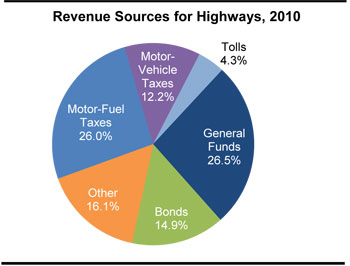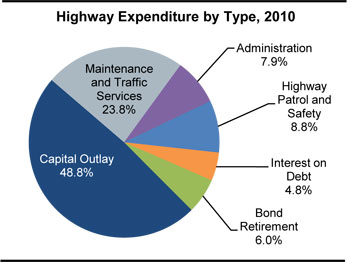11.3: Institutional Arrangements for Roadway Infrastructure Management
- Page ID
- 21175
Roadways are owned and managed by local governments, national governments, and private entities. These different groups often have complicated partnership arrangements in which multiple parties may contribute financing, standards, or other resources. The different groups may have very different objectives. For example, a national government may wish to promote inter-state transportation, whereas a local 144
government may be primarily oriented towards providing roadway services for local businesses and residents.
Users provide the bulk of funding for roadways, with some revenues coming from general government revenues. Common means of securing revenues include:
- Tolls directly on roadway use, usually varying by distance traveled and type of vehicle. Electronic toll collection using RFID tags is becoming more common.
- Vehicle registration fees, usually imposed on an annual basis. These fees may be applied to roadway construction, management processes (including police) or be diverted to general government revenues.
- Fuel taxes applied on volumes of fuel purchases. Figure 4 shows the combined local, state and federal taxes in different states in the United States in 2008. European fuel taxes tend to be higher than those in North America, whereas fuel taxes are low or non-existent in some countries.
- Vehicle sales taxes, although these taxes may flow to general government revenues rather than be dedicated to roadways.
- Property taxes may be used by local governments to provide local roadways.
- Fines such as parking violation fees may be used by local governments.
Figure 11.3.1 summarizes the sources of revenue for highways in 2010. Note that bond revenue must be eventually repaid as the bonds mature. Expenditures by type are shown in Figure 11.3.2. The capital outlay shown in Figure 11.3.2 represents rehabilitation and some lane expansion for existing roadway infrastructure rather than new construction (as discussed above).




